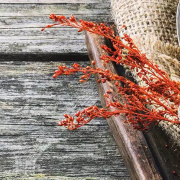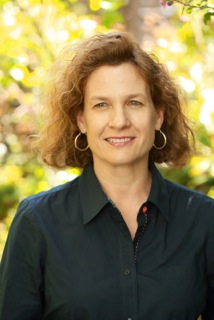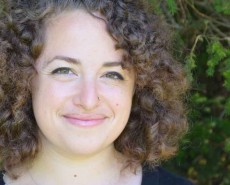What’s for Dinner? Bringing Racial Equity to the Table: Served Up Some Realness
You’ve been at that great feast. The one where the food is tasty and the conversation has got good flavor too. You take a bite while listening intently to the fellow across the table. They sip some of wine while you give your two cents on the state of affairs. Well we had a bit of that going on at What’s for Dinner? Bringing Racial Equity to the Table for Emerging Arts Administrators, an EAP MADE project awardee. On October 18th artists and staff from several Bay Area organizations came together to talk about what structural racism looks like in their field, at work, and in their lives, and what to do about it. It was a juicy conversation indeed.
The structure and organization of the day helped to digest a rich amount of information and dialogue. [workshop participant]
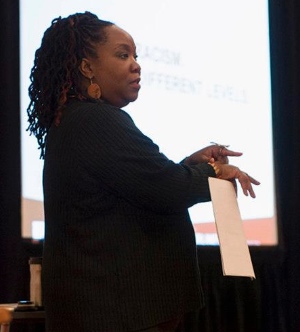 We began by establishing some clarity around language. What is white privilege? Internalized oppression? Institutional and structural racism? Are diversity, inclusion, and equity the same? Why does it matter? Popular narratives around success and failure in the United States are so divorced from a structural analysis that it inevitably serves to reinforce racism, and even other forms of oppression. And yes, we also talked about the role that art plays (intentionally or not) in that process, and how that process influences the making of art. And finally, we explored what that means for artists and arts organizations to be a major source of that narrative, of storytelling in our society.
We began by establishing some clarity around language. What is white privilege? Internalized oppression? Institutional and structural racism? Are diversity, inclusion, and equity the same? Why does it matter? Popular narratives around success and failure in the United States are so divorced from a structural analysis that it inevitably serves to reinforce racism, and even other forms of oppression. And yes, we also talked about the role that art plays (intentionally or not) in that process, and how that process influences the making of art. And finally, we explored what that means for artists and arts organizations to be a major source of that narrative, of storytelling in our society.
We need a space to practice our own story telling. [workshop participant]
One of the earliest ways that we try to make sense of the world is to try to understand the stories that are told to us. As a result, we have millions of conditioned responses swimming around in our head. This is good, and that bad. Watch out for this one. Embrace that. Hold this one at an arm’s distance. We are constantly juggling them, trying to keep them in check. What do we do with all of those stories? What do they do to us? From here we investigated the influence of implicit bias and resolved that there is interconnectivity among the art, society and the artists. Storytelling for the artist is deeply personal, and the response to that art is both personal (including privilege, bias, etc.) and structural (swimming in the context of history, culture, etc.) The mere existence of our art is not just a comment on the art itself, but also the structure in which it exists.
This training was very informative and provided some great tools on how to approach racial equity professionally and in my everyday life. It was great to be in a room of arts professionals looking for the same answers, especially when discussing intersectionality. [workshop participant]
So we dug deeper and unpacked our various identities in the context of privilege and marginalization. We even asked the scary question, “How does identity exist within your organization or the arts community?” Then we went even further and explored how we could leverage our areas of privilege for the greater good by making very direct, conscious choices around issues of race.
And we did it all while making some amazing Play Doh art! So yes. You missed a great dinner conversation. So don’t miss out the next time we decide to serve up some realness around race and the arts.
– Tammy Johnson
A word from Organizers Cristal Fiel and Tyese Wortham
In our ten years of experience as arts administrators, we have come across the issue of racial equity time and again. However, we didn’t know how to speak about racial equity and the arts so that colleagues and leadership would be able to listen and hear us until going through Tammy Johnson’s Step-Together-Step curriculum.
In response to our desire to push the conversation of cultural equity forward, we applied for Emerging Arts Professionals’ (EAP) MADE program and were awarded the opportunity to bring in art and racial equity trainer Tammy Johnson to the EAP network. Our goal for “What’s for Dinner: Bringing Racial Equity to the Table for Emerging Arts Professionals” was to provide a safe space for emerging arts administrators, artists, and allies to learn how to tackle issues around cultural equity that might arise in workshop participants’ respective cultural institutions.
As arts administrators of color, it is important to us that we approach our work with a lens of cultural equity. Our previous trainings with Tammy’s Step-Together-Step curriculum have informed us with a language around race and racism and have empowered us to feel more comfortable with talking about the “elephant in the room.”
We all come from different places, but we hope that the Emerging Arts Professional’s continued dedication to this issue would allow the network to find common ground to advance a culture that calls for a more equitable society.
– Cristal and Tyese
About the facilitator:
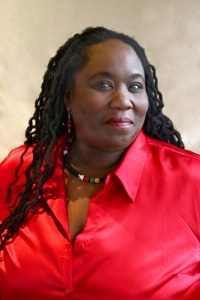 Tammy Johnson is a dancer, writer, and equity consultant. After directing electoral campaigns in Milwaukee, Johnson spent a decade advancing racial equity as a trainer, writer, and public speaker at Race Forward. Having gained recognition for her knowledge of equitable public policy practices at Race Forward, she co-produced Race and Economic Recovery with LinKtv and Race Forward’s Wordvideo blog series. Johnson is co-director of the award winning bellydance duo Raks Africa. Tammy lives in Oakland,California and can be reached at tmjabundance.com
Tammy Johnson is a dancer, writer, and equity consultant. After directing electoral campaigns in Milwaukee, Johnson spent a decade advancing racial equity as a trainer, writer, and public speaker at Race Forward. Having gained recognition for her knowledge of equitable public policy practices at Race Forward, she co-produced Race and Economic Recovery with LinKtv and Race Forward’s Wordvideo blog series. Johnson is co-director of the award winning bellydance duo Raks Africa. Tammy lives in Oakland,California and can be reached at tmjabundance.com
About the organizers:
Cristal Fiel holds a bachelor degree in Sociology and Ethnic Studies from the University of California, Berkeley. As Editor in Chief of the literary and arts organization, Maganda Magazine, she discovered her calling to work in the arts field. She has served as administrative coordinator and board member of the Asian American Women Artists Association, and has volunteered with a number of Bay Area organizations, including the San Francisco Film Society. Fiel is currently a program associate at the San Francisco Arts Commission.
Tyese Wortham is a grantmaker and administrator in the arts, teaching artist, and dancer with a commitment to advancing cultural equity in San Francisco Bay Area’s arts landscape by serving under-represented and under-resourced communities. She has been recognized for her expertise in cultural arts as a panelist, consultant, facilitator, and committee member for various Bay Area arts organizations, including the Isadora Duncan Dance Awards. Tyese served as a fellow in the first cohort of the EAP Fellowship Program.
What’s for Dinner?” was a workshop supported by Emerging Arts Professionals’ MADE, a re-granting program at draws on the inspiration and power of the network to propose and execute projects that address immediate solutions of the day. Cultural Equity is one of the four primary Areas of Study for EAP, and we are deeply thankful to Tammy Johnson, Tyese Wortham, and Cristal Fiel for providing this workshop to all of us. Learn more about MADE here: http://www.emergingsf.

